Simulated particles can have different charge states. As other parameters such as diffusion depend on the charge, DADOS implements charged particles as different species (click here for DADOS names):
| Physical Particle |
Implemented species | Particle types names |
| I | I+ I0 I- |
IP I IM |
| V | V++ V+ V0 V- V- - |
VPP VP V VM VMM |
| As | As+ | As |
| Asi | Asi+ Asi0 |
AsiP Asi |
| AsV | AsV+ AsV0 AsV- |
AsVP AsV AsVM |
| B | B- | B |
| Bi | Bi+ Bi0 Bi- |
BiP Bi BiM |
| C | C0 | C |
| Ci | Ci0 | Ci |
| In | In- | In |
| InV | InV0 InV- |
InV InVM |
| Ini | Ini0 Ini- |
Ini IniM |
| P | P+ | Ph |
| Pi | Pi0 Pi+ |
Phi PhiP |
| PV | PV+ PV0 PV- |
PhVP PhV PhVM |
DADOS assumes some hypotheses:
Shifts of the minimum value of conduction band and maximum value of valence band are calculated by DADOS using the following expressions, according to Jain & Roulston model (Jain et al. 1991):


Where:
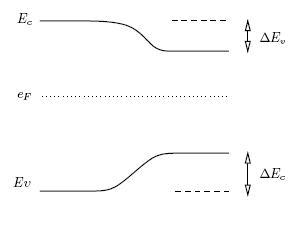
In every charge update, DEc and DEv are calculated.
For the rest of the electronic levels, DADOS assumes a proportional variation with the band gap narrowing as given by the expression:
![]()
Where:
See Sze 1981.
DADOS implements electrostatic interactions in both short and long range:
There are two mechanisms to control the charge states probabilities:
DADOS uses a counter to simulate charge update and calculate Fermi level in all boxes. Every time an electrically active dopant is created or destroyed, the counter is raised. When the counter value is higher than a threshold, DADOS updates the charge state for all particles.
The threshold changes during the simulation, according the charge variations. With ChargeVarPercent, this mechanism can be controlled. This parameter indicates the maximum relative error allowed in Fermi level updates. The higher ChargeVarPercent is, the less updates are done. It is NOT recommended changing this parameter because DADOS is very sensitive to variations in this value. Modifications of this parameter should be allowed only for advanced users because:
If ChargeVarPercent is very low, calculations will be made very frequently, and the simulation will become slower.
If ChargeVarPercent is very high, updates will not be frequent enough, and physically incorrect values might be obtained.
As the formation energy of charged species depends on the Fermi level, mobile charged point defects are going to find an energy barrier to jump into boxes in which the formation energy is higher. Electric drift is implemented in DADOS as a discrete process, setting a constant Fermi level for each box:
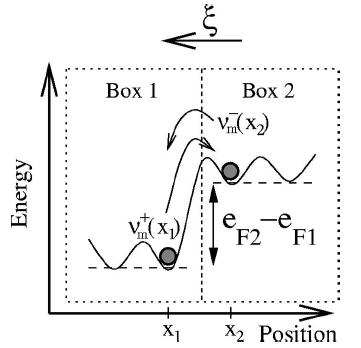
DADOS calculates the Fermi level in each box using its smoothed dopant concentration, Nsm:
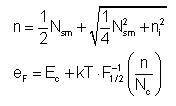
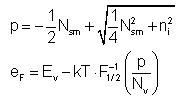
Where:
See Sze 1981.
DADOS checks all the boxes and stores the dopants per box. After that, DADOS smoothes the dopant concentration using a locally-dependent radius equal to the Debye length:
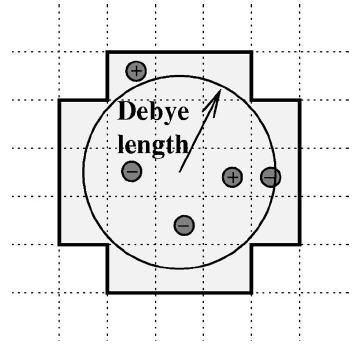

Where:
In order to avoid excessive computerization, the maximum number of boxes for Debye length is set to 7.
The smooth dopant concentration, Nsm, will be used in the Fermi level calculation of each box using the neutrality approximation. This smoothed neutrality approximation is a computer-efficient method with intermediate precision between the simple local neutrality approximation and the time consuming solution of Poisson equation.
The band gap width depends on the temperature, T, following the expression:

Where:
We denote by e_? the charge level associated to a charged particle, ?, at the current temperature, T. e_? is measured from the valence band edge.
DADOS assumes that all charge levels temperature dependancy is the same as band gap width one, thus:

Where:
Related physical magnitudes
DADOS implements the states density in both conduction and valence band as follows:


Where: